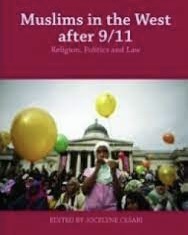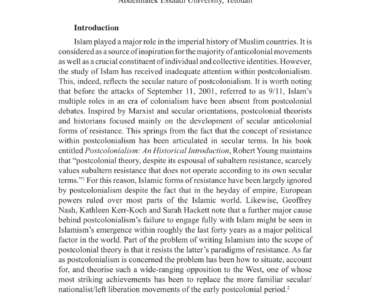
Shi’ism In Early Iran
The most astonishing chapter in the Safavid consolidation of power was the decision to promote Shi’ism as Iran’s official religion. Until the Safavid era, Iran was largely Sunni, although there was a minority Shi’ite presence in Qum and Isfahan. Although the Safavid shaykhs claimed descent from the seventh imam and integrated Shi’ism into their religious identity and authority, the original Shi’ism of the Safavids was a minority orientation. The murshids and loyaliststgjguuun understood Shi’ism as a claim to embody divinity. They worshiped the master of the order as the bearer of the living spirit of God. The new official religion of the shahs, however, was Twelver or ithna ashari Shi’ism, a much more institutionalized and mainstream version of Islam, but one that was neither grounded in Iranian culture and history nor even acceptable to their most devout followers. It was a way of elevating the shahs above both their supporters and their subjects.
The new Shi’ite establishment was built up over the course of a century. The process began with the importation of Shi’ite scholars from Syria, Iraq, Arabia, and Bahrain. The new cadres were organized into an administration controlled by the state. An official called the sadr was appointed to be the intermediary between the shahs and the ulama, and eventually this functionary was given responsibility for the appointment of judges and teachers and for the administration of endowments. A supreme religious court was created. The Safavids further extended their control over religion by endowing the principal Shi’ite shrines, founding the teaching colleges, and providing grants of income from landed estates for the leading ulama families. An ulama landed aristocracy was created as a buttress of the regime.
The creation of this apparatus was in some respects an extension of earlier Iranian Islamic practices and in other respects extremely innovative. The Seljuks had originated the policy of patronage for religious activists, who were all Sunni, as a way of gaining influence over the religious elites. The Safavids adopted this policy as well, but went much further in centralizing control of the ulama in the hands of the shahs. They brought the ulama from the position of clients to that of servants of the state. The Safavids also suppressed all rival forms of religion in Iran. The Seljuks had waged war with minority Shi’ite communities; the Safavids destroyed Iranian religious pluralism by the persecution of Sunni, alternative Shi’ite, and Sufi rivals. Sufi shrines were destroyed; Sufi brotherhoods were banned. For example, tombs of the Naqshabandi Sufi order were desecrated; khanaqas of the Nimatullahi Sufi order were seized and turned over to Shi’ite organizations. The pilgrimage to Mecca was deemphasized and replaced by the visitation of Shi’ite shrines.
Isfahan’s royal square is dominated by entrances to four great buildings. On the west is the Ali Qapu, or “Sublime Port,” the entrance to a vast palace precinct. From its verandah overlooking the great square, the ruler and his court could view the ever-changing pageantry below.
The success of Twelver Shi’ism in Iran, however, was not just a question of state power. Under Safavid sponsorship, Shi’ism entered a period of extraordinary religious, literary, and philosophical creativity and genuinely became the religious culture of Iranians. Although the original Sufi–Shi’ite concepts of the Safavids and the Sufi movement were proscribed, the veneration of Ali and Husayn became an integral part of Iranian Islam. The great shrines of Mashad and Qum were rebuilt during the reign of the shah Abbas I (r. 1588-1629), generously endowed, and made an essential part of the practice of Shi’ism in Iran. Shrines called imamzadehs were founded in memory of the imams or associates of the imams; imambaras (shines devoted to Husayn and Hasan) replaced villages shrines. The pilgrimage to Karbala became for Iranian Muslims even more important than the pilgrimage to Mecca.
Under the Safavids, Twelver Shi’ism became the state religion of Iran. The great shrines at Qum and Mashhad were enlarged, and imamzadehs, smaller shrines in memory of other descendants or associates of the imams, became the focus of local piety and veneration.
The commemoration of the death of Husayn in the month of Muharram (the first month in the Islamic year) became the emotional core of Iranian Shi’ism. In the first ten days of Muharram, Iranians gathered to hear the heartrending stories of the martyrdom of Husayn at the hands of the Umayyads in 680 B.C.. Sermons, recitations of elegies in memory of Husayn, passion plays, and the processional movement of shrines accompanied by columns of mourners and flagellants anchored Shi’ism in popular feeling. Neighborhood groups, youth gangs, and religious sects competed to outdo each other in the veneration of Husayn. Shi’ism was not just a state-sponsored bureaucratic religion; it had seized hold of popular feeling to become the deeply felt religious identity of the Iranian masses.
At the same time, high-culture gnosticism and philosophy also flourished. The Iranian philosopher and teacher Mir Damad (d. 1630) and his disciple Mulla Sadra (1571–1640) sought to integrate neo-Platonic ideas with the mystical vision of the Persian theologian and philosopher al-Suhrawardi, the sayings of Ali, and the philosophy of the Islamic mystic Ibn al-Arabi (1165–1240). Thus Shi’ism emerged as one of the great philosophical religions of the Islamic era. As a form of state religion, intellectual culture, and mass passion, Shi’ism had become a comprehensive alternative version of Islam. Despite this singular institutional creation, however, relations between the state and the religious establishment eventually became strained. Already in the seventeenth century there were subtle shifts in the position of the religious elites. Although Shi’ism had been institutionalized by the power of the state, deeply held religious values encouraged an attitude of withdrawal from worldly affairs and disdain for political engagement. As religious leaders withdrew from politics, they were no longer willing to passively accept the authority of the state. Shi’ite scholars began to contest the notion that the Safavid shahs were the representatives of the hidden imam. They claimed instead that the scholars themselves were the highest religious authority and the true representatives of the imam on earth.
As the religious establishment separated itself from political control, the scholars began to debate the basis of their own authority. The usuli school claimed that religious scholars knowledgeable in the teachings of the Quran, the sayings of Ali, and the historical consensus of the community (ijma) were mujtahids (scholars-jurists) entitled to independent religious judgment (ijtihad). Their opponents, the akhbaris, restricted the authority of individual scholars and insisted on literal adherence to the letter of the tradition passed on by the Prophet and the imams. By the eighteenth century the debate had shifted from the role of the monarch to the limits of ulama authority. The religious establishment, although born as the creature of the state, had effectively become independent, with consequences that echo in Iran to the present day. This transformation of the religious establishment from a servant of the state to an independent institution was actually the consequence of a second aspect of Safavid history — the relation of the state to the tribes. As much as the Safavid regime was able to build up slave forces and a central tax administration, as much as it created a religious organization, it was not able to fully subordinate the tribal forces. In northeastern and northwestern Iran, and to the south in what is now Afghanistan, Turkish uymaqs (bands of tribal chieftains, their clients, and individual freebooters organized into a single political entity) remained powerful. In many places they were able to rule independently; in other areas they were tributaries, but never were they crushed or eliminated. In most parts of Iran the monarchy had to rely on quasi-independent intermediaries for the government of the country. Apart from the reign of Shah Abbas I, the Safavid state remained a court-centered regime with relatively little power in the countryside.
For reasons that are still unclear, the late seventeenth century was a time of decay for the Safavid central state. The Safavid army was no longer a competent military machine, and central administration fell apart. The uymaqs — Afghans, Afshars, Qajars, Zands, and others — rose up and partitioned the country among them. In 1722 Ghalzai Afghans seized Isfahan, and in 1726 they eliminated the dynasty that had ruled Iran for more than two hundred years. In some respects the Safavids were the direct continuation of the political system of the Mongols and the Timurids. Although they raised the concept of Iranian imperium to new level of legitimacy and cultural brilliance and adapted the same institutional mechanisms to centralize state power, like their predecessors they could not fully succeed in taming the Turkish tribes. The Safavid state remained a court regime in a fluid society in which power was widely dispersed among competing tribal forces. These forces would in the end overthrow the dynasty.
The Safavids differed profoundly from their predecessors in their relation to Islam. While earlier states had been patrons of Islamic activity, the Safavids took this further. Initially they claimed to be the living representatives of the divine command. In a later phase, however, they created a highly centralized and controlled religious elite as the backbone of their administration of Iran and their claim to legitimacy as the defenders and patrons of Islam. The Safavid state thus left as its legacy to modern Iran a Persian tradition of glorified monarchy, a society partitioned among tribal principalities, and a monolithic but liberated and autonomous religious establishment.
Shi’ism In Early Iran
803 – 012
Home
Last Updated: 04/2022
See COPYRIGHT information below.



